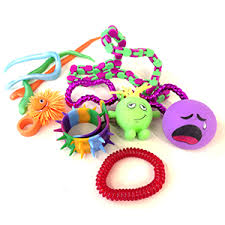Explaining your fidget toy
Online test
Find out the severity of your symptoms with this free online test

image: cheap disability aids
The road to recovery when you have mental illness is a long and arduous one, characterized by highs and lows, good days and bad. But one of the greatest obstacles to overcoming the challenges of mental illness is the lack of awareness and negative stigmas attached to conditions of the mind. This could not be truer for Body-Focussed Repetitive Behaviors (BFRBs) such as excoriation disorder. These remain one of the most under-diagnosed mental disorders, partly because people are not aware the behavior they are struggling with is a recognized clinical condition, and partly because of the shame surrounding the behavior. However when the disorder is identified, there are treatment options available. Cognitive Behavioral Therapy (CBT) is considered the most effective form of therapy for people with compulsive skin picking disorder.
Habit reversal through the use of fidget toys
One of the CBT methods that has shown to be effective for many skin pickers is Habit Reversal Training (HRT). HRT promotes the unlearning of the undesirable behavior by either reducing exposure to the precipitating triggers (stimulus control), or replacing the behavior with more acceptable, context appropriate actions (competing responses). The problem is that it is often difficult to find an effective competing response to skin picking that is also appropriate and discreet in public contexts such as work or school. One of the competing responses often recommended and is effective in reducing picking, is the use of a fidget or fiddle toy. This could be a stress ball, a charm bracelet or one of the many other squishy, fiddly objects available online or in stores.

image: difflearn blog
When they ask about your fidget toy
When at work, in a meeting or at your desk it may be deemed socially acceptable to use a stress ball, but what if the item you find effective in competing with the urge to pick is something toy-like or very conspicuous? In a school environment this may be even more of a problem, especially if the teacher finds the use of the fidget toy in class disruptive or distracting. One blogger described the experience of having teachers or fellow students asking about the fiddle toy. As she describes in her blog post, even if you have the confidence to come out and confess your disorder, it’s not always a discussion you want to get into right there and then. Her solution was to create little cards with a very brief explanation and letting the person know that they are welcome to research the disorder or come chat to her at a more appropriate time. This may not work for everyone, but if may help some who struggle with this same issue so it is great that she has shared this with others.
Online test
Find out the severity of your symptoms with this free online test
Start your journey with SkinPick
Take control of your life and find freedom from skin picking through professional therapy and evidence-based behavioral techniques.
Start Now



